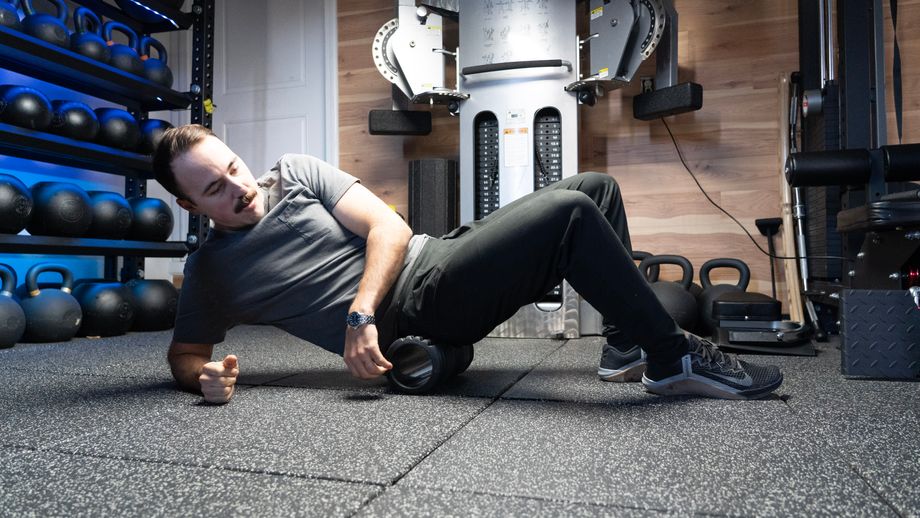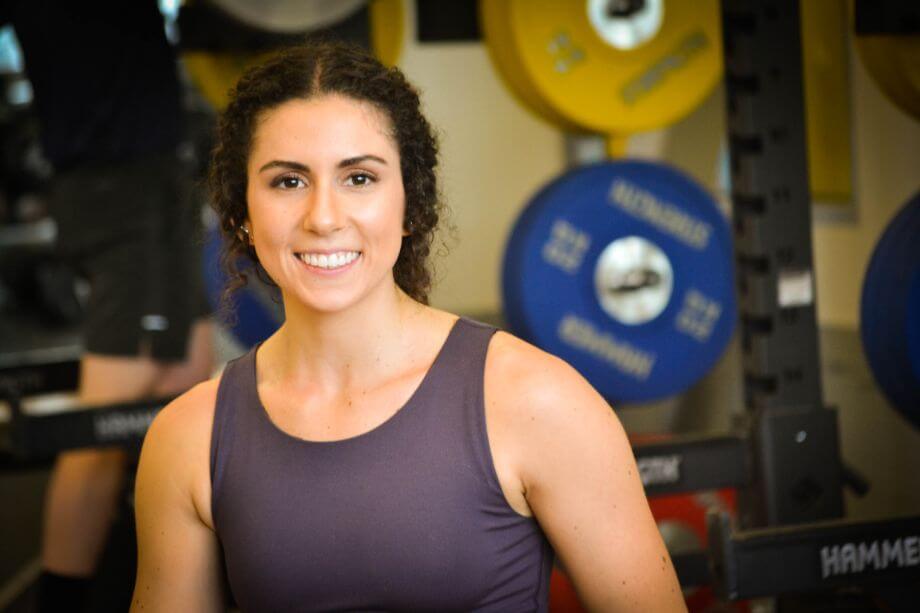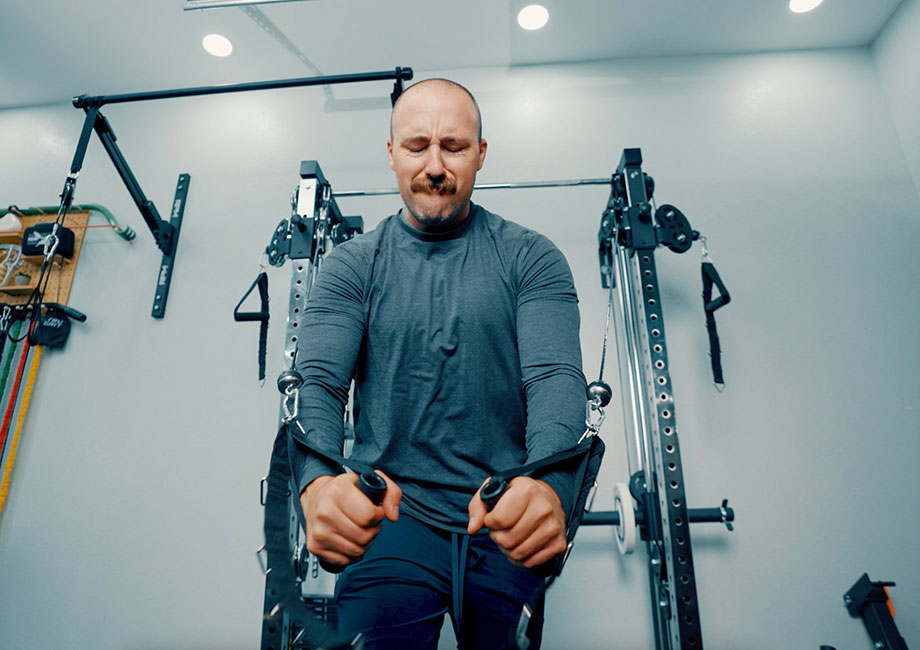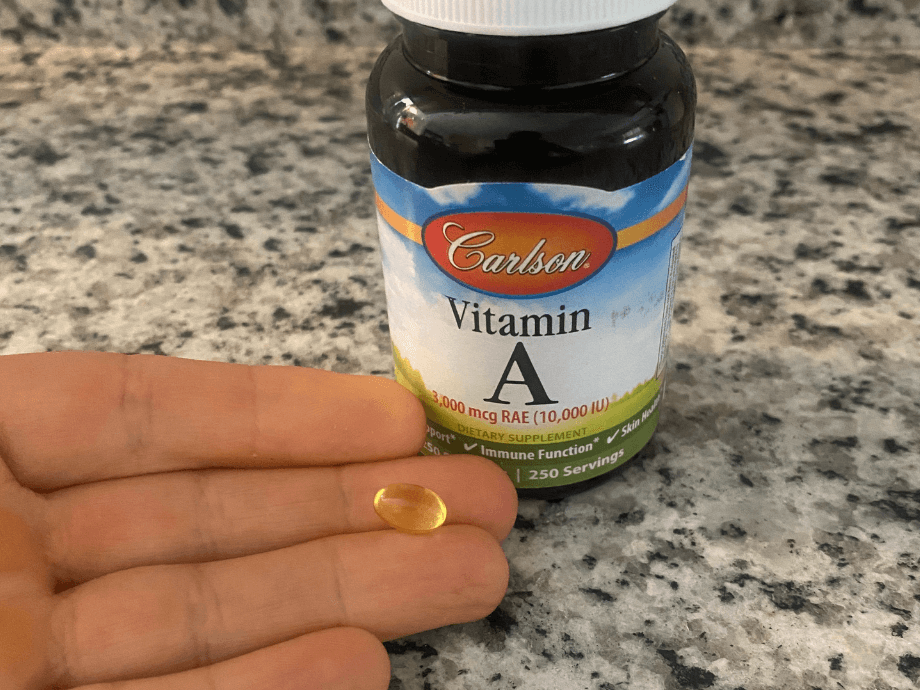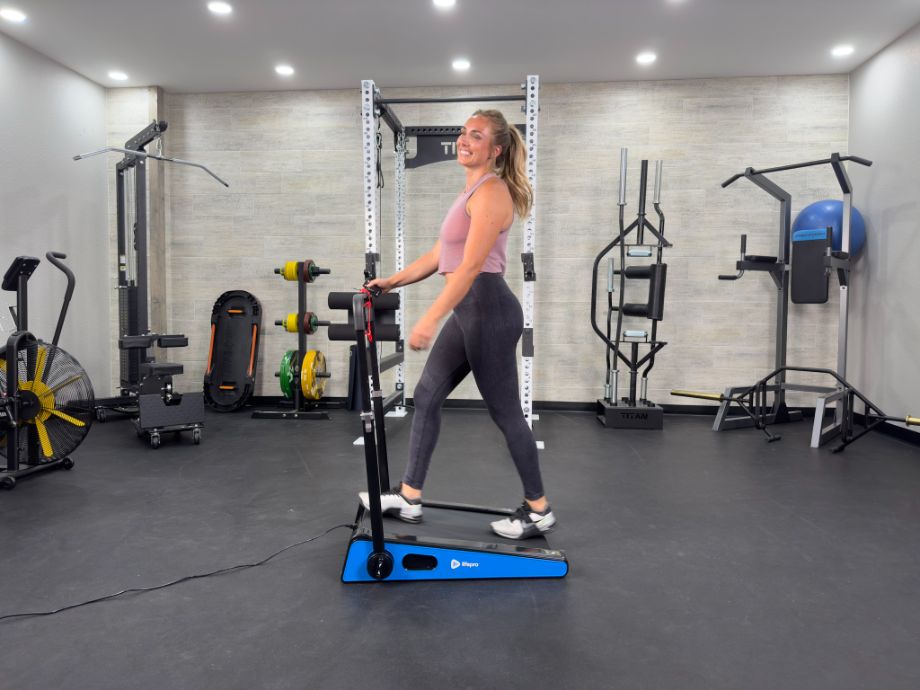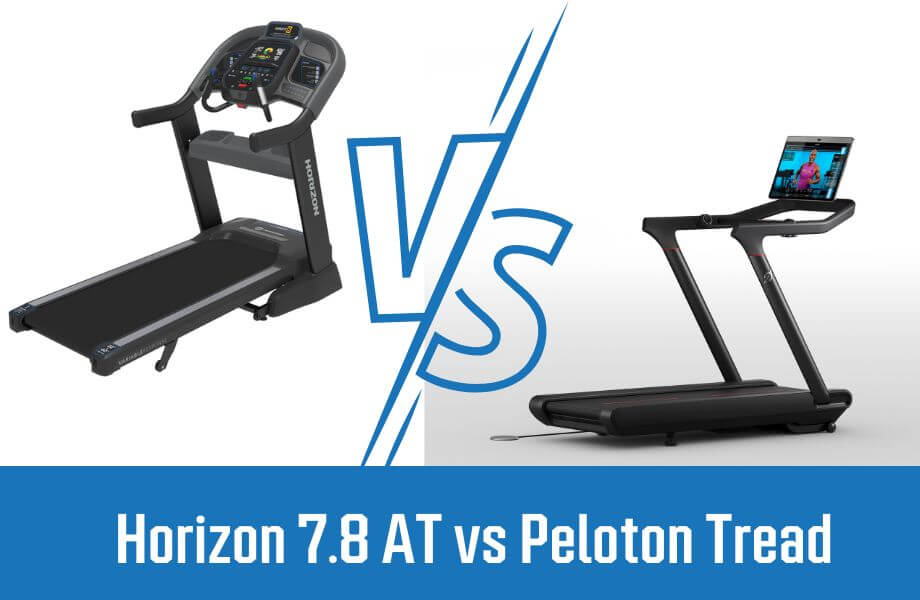There’s no secret to getting stronger, but focusing on your mobility can give you a leg up.
In a fitness world obsessed with lifting more weight, showing more abs, and building bigger biceps, a lot of workout enthusiasts forget about—or ignore—the un-sexy parts of fitness.
I mean, who wants to post on Instagram about their nine hours of sleep or gallon of water a day? Meh, I think most of us would rather post our new squat personal records.
You should know, however, you won’t have a celebratory squat PR video to post without good technique. And without good mobility, you won’t have good technique.
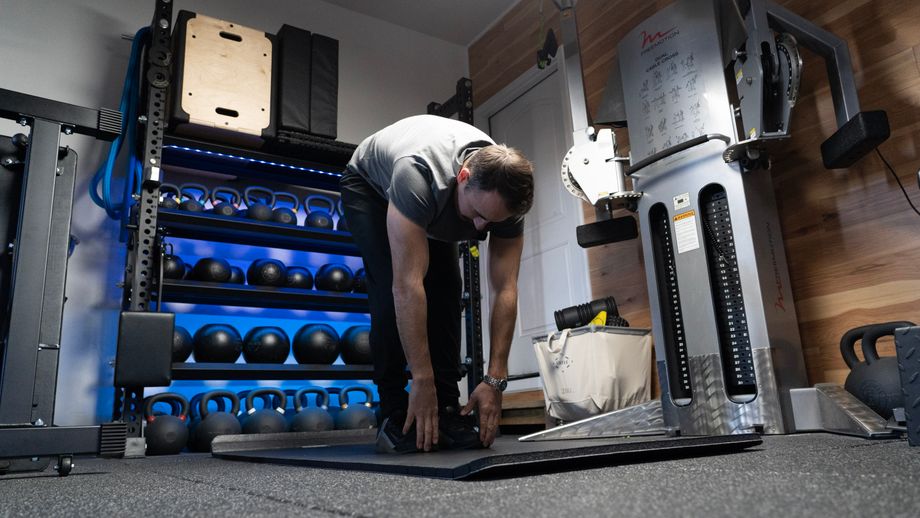
That’s right: Today I’m here to talk to you about the importance of working on your mobility, with the help of the experts at Power Athlete.
Power Athlete’s resident physical therapist, Dr. Tim Cummings, PT, DPT, talked with me about mobility and how to improve it via the best mobility exercises, and I’m here to share that information with you today.
Why Mobility Matters
Mobility work should be a big part of the foundation of your strength training routine. Mobility training can improve the starting positions for all of your lifts, help all of your muscle groups and joints achieve a deeper range of motion, reduce your risk of injury while training, and help you stay pain-free on the platform.
Not to mention—good mobility translates to stronger performance.
“It turns out that when it comes to performance in the gym, active mobility produces superior results [than passive flexibility],” Dr Tim says. “A body that has great passive muscle flexibility but is unable to absorb external force appropriately (what Power Athlete calls ‘tensile strength’) is at higher risk of overload injuries.”
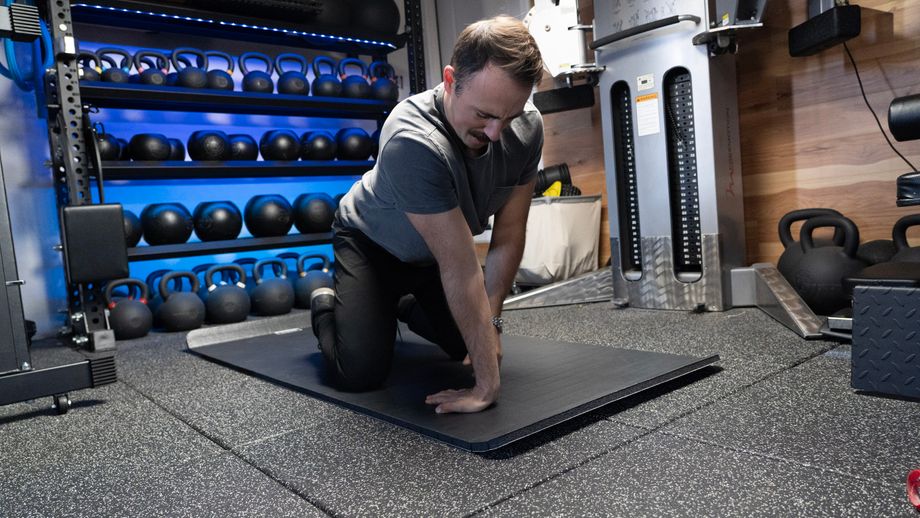
And when it comes to optimal performance—on the field, on the weightlifting platform, on the line of duty—active mobility becomes even more important, Dr. Tim says.
Having a normal and healthy range of motion in both the joints and the muscles allows for a margin for error, he explains. “When your arm gets pulled behind your body or you have to unexpectedly stop and cut, that active, strong range of motion (ROM) is what saves you from suffering an injury.”
Shoulder Mobility Exercises
The shoulder is one of the most mobile joints in the body. But with that impressive range of motion comes compromised stability if things aren’t moving as they should. These shoulder mobility drills will improve your shoulder ROM and help strengthen your shoulder joint in compromised positions.
Prone S Waves

What they’re good for: Prone S Waves promote healthy shoulder range of motion and scapular stability by encouraging you to move your shoulders through an extended range of motion under tension.
How to do them:
- Lie face-down on an exercise mat. Allow the tops of your feet (not your toes) to rest on the mat.
- Hold your right arm above your head and your left arm by your left side.
- Switch, lowering your right arm to your right side and bringing your left arm up above your head.
- Pause for 1 second at the end of each rep.
- Make sure to engage your glutes and your core throughout the entire movement, taking care not to overextend your back.
- Perform 8-10 reps.
Blackburns

What they’re good for: Similar to the Prone S Waves above, Blackburns require you to move your shoulders through a full range of motion while in the prone position and while engaging your lower body to avoid lumbar hyperextension (over-extending your lower back).
How to do them:
- Lie face-down on an exercise mat. Allow the tops of your feet (not your toes) to rest on the mat.
- Hold both arms by your sides, about two inches off of the ground.
- Simultaneously, bring both arms up above your head and touch your left hand to your right hand. Pause for 1 second, feeling the burn in your scapular area.
- Bring your hands back down to your sides, touching them together behind your back. Pause for 1 second.
- Repeat for 8-10 reps.
Superman Overhead Press

What it’s good for: This full-body exercise is kind of a two-for-one, challenging your mobility in both the shoulders and your thoracic spine. It’s essentially the overhead press movement pattern, but in a prone position, which requires extra scapular engagement and spinal mobility.
How to do it:
- Lie face-down on an exercise mat. Allow the tops of your feet (not your toes) to rest on the mat.
- Assume the Superman position: Engage your glutes and lift your feet off of the ground. Lift your chest up from the ground, too.
- Position your arms in right angles by your head, as if you were about to perform an overhead press.
- Extend your elbows and reach your arms as far as you can. Pause for 1 second at the end range of motion.
- Repeat for 8-10 reps.
Pec Stretch

What it’s good for: This is a good static stretch for the chest and shoulders. This simple stretch opens up the anterior (front) shoulder. Try to keep spinal rotation to a minimum during this stretch.
How to do it:
- Place the palm of your right hand against the upright of a rig or against a wall. Stand with your feet shoulder-width apart.
- Walk away from the support object so that your arm is fully extended. It should be parallel with the ground.
- Turn to the left, keeping your weight evenly distributed, feeling the stretch in your pec and anterior deltoid.
- Hold for 30 seconds, then switch sides.
Thoracic Mobility Exercises
The majority of people today struggle with thoracic spine (T-spine) mobility, thanks to our increasingly sedentary lifestyles. Your T-spine is the section of spinal joints that runs from the base of your neck to the bottom of your rib cage. It’s the only section of your spine that connects to the rib cage, and it’s also the longest section of your spine, consisting of 12 vertebrae. T-spine mobility is extremely important, as it affects lumbar (low-back) stability.
Cat Cow Pose

What it’s good for: This one might look funny, but trust us, it does wonders for your mid-to-upper back. Breathe in as you round your T-spine (cat) and exhale as you release and transition into the extension (cow) portion of the pose.
How to do it:
- Position yourself on all fours (hands and knees) on a mat.
- Ensure your thighs and arms are perpendicular to the ground.
- Breathe in deeply and round your spine, pressing your upper spine toward the sky and tucking your chin.
- Breathe out and slowly arch your back, focusing on the upper spine, and lift your face to the sky.
- Return to center.
- Repeat for 5-10 reps.
Iron Cross Stretch

What it’s good for: This mobility exercise promotes spinal rotation and stretches your glutes and iliotibial (IT) band, the ligament that runs along the outside of your thigh from your hip to your knee.
How to do it:
- Lie face-up on an exercise mat.
- Lift your left leg until it’s vertical to the ground.
- Cross your leg over your body and try to touch your left toes to the ground on the right side of your body. Hold here for 10-15 seconds.
- Bring your left leg back to center and gently lower it.
- Repeat on your right leg.
Scorpion Stretch

What it’s good for: The scorpion stretch is essentially the opposite of the iron cross stretch. Instead of lying supine (face up), you’ll lie prone (face down). It also promotes spinal flexibility and rotation, along with quad flexibility and hip extension.
How to do it:
- Lie face-down on an exercise mat.
- Try to touch the toe of your left leg to the ground on the right side of your body without excessively lifting your shoulders from the floor.
- Hold the position for 10-15 seconds and return to center.
- Then bring your right leg across your body and touch your right foot to the ground.
- Hold the position for 10-15 seconds and return to center.
Deep Squat Hold With Thoracic Reach

What it’s good for: This drill will do wonders for your hips and your upper back, ultimately resulting in better squat positioning and performance.
How to do it:
- This is an advanced mobility exercise, so use a support such as a pole or a wall if you need it.
- After sinking into a deep squat, place both hands on the ground in between your feet.
- Keep one hand flat on the ground while reaching up to the sky with the other to stretch and rotate your spine.
Wrist Mobility Exercises
If you’re like most people, you probably never really thought about your wrist mobility. However, your wrists are in fact one of the areas you should focus on most—poor wrist mobility can cause you to dump a front squat, fail a clean-and-jerk, or struggle with overhead squats.
Aside from those complex exercises, wrist immobility even shows up during isolation exercises like biceps curls and triceps extensions. Try these mobility exercises to loosen up your wrist joints.
Forward Wrist Leans

What it’s good for: This drill will help you develop the mobility you need for a strong front-rack position with a full grip on the barbell. Mobilizing your wrists in this way may also reduce pain during overhead pressing motions.
How to do it:
- Position yourself on all fours (hands and knees) on a mat.
- Ensure your thighs and arms are perpendicular to the ground.
- Lean forward, shifting your weight to your wrists as much as possible.
- Hold the position for 5-10 seconds and then relax, returning to center.
- Repeat for 5 reps.
Flexion and Extension Drill

What it’s good for: This exercise strengthens the wrist joint and gets it accustomed to moving through the full range of motion it should have.
How to do it:
- Sit in a chair and place your forearm on a flat surface, like a table.
- Flex your wrist (bend it downward) as far as you can without pain. Return to center.
- Extend your wrist (bend it upward) as far as you can without pain. Return to center.
- Repeat for 10 reps on each wrist.
Wrist Wall Walks

What it’s good for: This exercise is similar to forward wrist leans in that it challenges wrist flexion, but it also adds an element of shoulder mobility. You might feel this drill all throughout your arms—if you do, that’s a good sign you should do it more often.
How to do it:
- Place your palms flat against a wall upside down (fingers facing the floor).
- Step away from the wall so that your arms are fully extended.
- One by one, “walk” your hands up the wall until you can no longer maintain proper spinal posture or keep your palms flat.
- Walk them back down to the starting position.
- Perform 3-5 sets.
Hip Mobility Exercises
Our hips suffer the same fate as our T-spines: hours upon hours of sitting every day. This causes our hip flexor muscles to tighten, our hip extensor muscles (glutes, hamstrings) to lengthen, and our hip joints become accustomed to a chronic 90-degree angle.
Eventually, our hips “forget” how to move through the full range of motion they’re intended for, and there are consequences for the lower back as well. These mobility exercises will help you regain range of motion in your hips and crush your favorite barbell exercises.
Samson Lunge

What it’s good for: Hey, desk workers, we’re looking at you: Stretch out those tight hip flexors with Samson lunges. Holding your arms overhead adds a little extra oomph to the stretch in the front of your hips.
How to do it:
- Start by standing with your feet about hip-width apart.
- Step your left foot backward and gently lower your left knee to the ground.
- Press your hips forward and lift your arms above your head. Hold for 5 seconds.
- Step your left leg forward to return to standing.
- Step your right foot backward and gently lower your right knee to the ground.
- Press your hips forward and lift your arms above your head. Hold for 5 seconds.
- Step your right leg forward to return to standing.
- Repeat for 5-8 reps on each side.
World’s Greatest Stretch

What it’s good for: This is called the world’s greatest stretch for a reason! Not only does it just feel phenomenal on the hips and spine, but it moves your hip joints through a range of motion that targets all of the muscles that move your hips.
How to do it:
- Start by standing with your feet about hip-width apart.
- Bend down to place your hands flat on the floor.
- Step both feet back and assume the high plank position (as if you were about to perform a push-up).
- From there, step your left foot forward to assume a deep lunge position.
- Drop your right elbow to the ground or as close as you can get it. Hold for 15 seconds.
- Place your right hand back on the ground.
- Lift your left arm and twist your torso toward your left leg, raising your left arm up to the sky. Feel the stretch in your spine.
- Return to the starting position and then complete the steps on your right leg.
Banded Quad Stretch

What it’s good for: This is a great static stretch to increase flexibility throughout the leg and hip.
How to do it:
- Grab a long looped resistance band.
- Lie face-down on an exercise mat and loop the resistance band around your left foot.
- Use the band to draw your foot close to your lower back.
- The challenge here is to not over-extend your lower back while stretching your quad. That’s the purpose of the band: to allow you to find the right ROM that deeply stretches your hip flexors without compromising stability in your spine.
Wall Straddle

What it’s good for: This stretch will change your life. This feel-good pose promotes flexibility in the hip adductors (muscles used to squeeze your legs together) and abduction at the hip joint. Abduction is how you move your leg out to the side of your body.
How to do it:
- Sit on the floor next to a wall. Swing your legs up so that they rest against the wall perpendicular to the floor. Scoot up to the wall until your butt touches it.
- Little by little, lower your legs down to the side into a straddle pose.
- When you feel an intense stretch, stop and hold for 30 seconds.
Ankle Mobility Exercises
Just like the wrists, so many people neglect their ankles when it comes to mobility. It’s not exactly hard to overlook your ankles when your hips need so much work, but you’ll be surprised at the improvements in your lifts (especially squats) if you work on your ankle ROM.
These drills will help you develop better dorsiflexion (toes up), plantar flexion (toes pointed), and rotation in your ankle.
Knee to Wall Stretch (Ankle Dorsiflexion Stretch)

What it’s good for: This is one of the most useful exercises for increasing ankle dorsiflexion. By holding onto or pressing into a sturdy object like a pole or wall, you can challenge your ankle joint to move a little further than you might without that assistance.
How to do it:
- Stand facing a wall. Put the toe of your right shoe against the wall and put the toe of your left shoe against the heel of your right shoe.
- Step your right shoe back, keeping your left foot planted.
- Lean your body weight into your left leg, bending at the knee and ankle as much as possible. The goal is to get your knee as close as possible to the wall without lifting up your heel or otherwise compensating for reach.
- Hold the end range of motion for 15-30 seconds.
- Complete on the other side.
Downward Dog Calf Stretch

What it’s good for: In addition to promoting ankle dorsiflexion, this mobility drill is also a nice calf stretch and T-spine opener.
How to do it:
- Start standing with your feet hip width-apart.
- Bend down to place your hands flat on the floor.
- Walk your hands forward until your body is making an upside-down “V.”
- Shift your weight from your hands to your heels, pressing your feet down toward the floor.
- Try to press your heels into the floor if you can.
- Hold the end range of motion for 5-10 seconds, rock back onto your hands, and then shift back to your heels.
- Complete 5-10 reps.
Resisted Dorsiflexion

What it’s good for: This double whammy of a drill both stretches the back of your ankles and strengthens your anterior tibialis, the muscle that runs along the front of your shinbone. Together, these two mechanisms promote strong improvements in ankle mobility.
How to do it:
- Loop a resistance band around the upright of a squat rack or pull-up rig. (A very heavy kettlebell would also work.)
- Sit on the ground and loop the other side of the band around your foot.
- Scoot back until there is tension in the band.
- Flex your ankle, stretching the band toward your body.
- Hold the end of each stretch for 1-2 seconds.
- Perform 8-10 reps on each ankle.
Mobility vs. Flexibility
A lot of people think mobility and flexibility are one and the same, but according to Dr. Tim, that’s not the case at all. A degree of flexibility is a prerequisite for good mobility, but being super bendy alone won’t help you achieve and maintain positions conducive to good fitness technique.
Dr. Tim posed this question that really made me think: “Why is it that someone can perform the splits, yet lack the ability to sit in a low squat position with their hips below parallel, heels on the ground, and their back straight?”
The answer lies between the qualities of passive flexibility and active mobility, he says.
So what is the difference, then? Well, Dr. Tim says it depends on where you stop on the Internet these days. On the simplest level, flexibility is a muscle’s ability to lengthen without damage; and mobility is a joint’s ability to move through a defined range of motion.
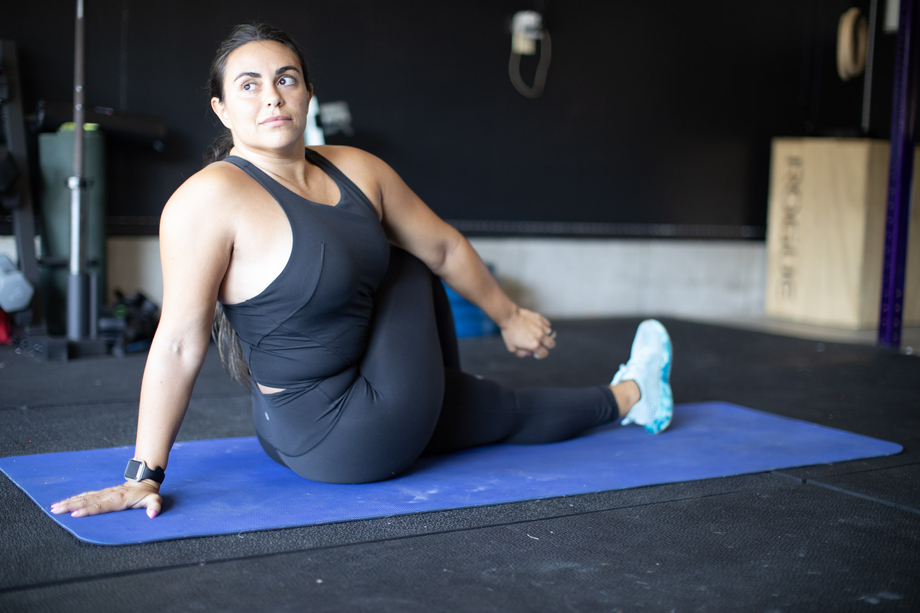
However, it goes deeper than that. “We can create a working definition to distinguish between each if we put all joint, muscular, and neuromuscular passive range of motion (PROM) into the ‘flexibility’ definition,” Dr. Tim says, “while defining any active range of motion (AROM) around a joint or series of joints with the involvement of the muscles and the neuromuscular system as ‘mobility’.”
To pack all that science into an example: When a person can sit down with their legs straight in front and touch their nose to their knees, that’s an exhibit of flexibility. There’s no real muscular engagement going on—just stretching.
Conversely, when a person can drop into a proper squat and hold that position, it shows three things: Their muscles have the requisite flexibility to access that position; their joints (specifically the hips, ankles, and spine) can move through full range of motion; and that their muscles are strong enough to stabilize the joints in the squat position.
So, flexibility is passive, and mobility is active—and a person can be flexible but lack mobility.
Mobility and flexibility both matter. Depending on who you talk to, you might hear that one is more important than the other. It really all comes down to the intent behind the characteristic. For instance, flexibility could be considered more important for yogis or dancers. For the average person, it could be argued that flexibility and mobility should be had in equal measure.
However, for someone looking to maximize their workouts, mobility gets the nod.
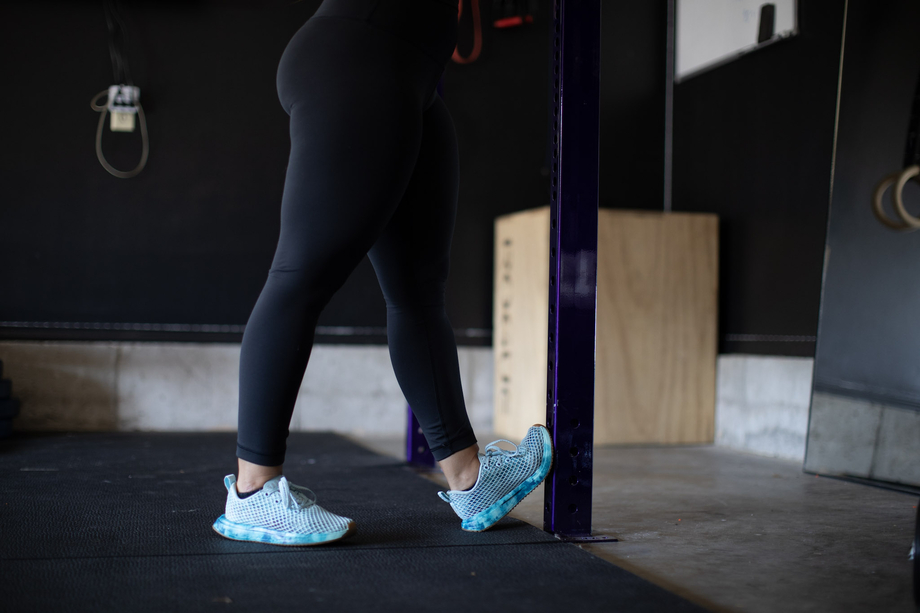
Mobility Exercises: Final Thoughts
Doing the above mobility drills is a great way to improve your range of motion throughout your whole body, but keep in mind, this list is far from exhaustive. There are countless mobility exercises for all joints.
The ones most beneficial to you depend on your problem areas and your goals, and implementing them can be as simple as adding some dynamic stretching to your warm-up before each workout.
In addition to bodyweight mobility exercises, you can improve range of motion and flexibility in some other ways. Massage guns, for example, can loosen tight muscle tissue and fascia, and help you gear up for a workout that requires deep ranges of motion. Other mobility tools, such as foam rollers, muscle sticks, crossover symmetry systems, and even kettlebells and dumbbells, are also helpful in the right scenarios.
However, nothing beats a well-designed program with proper exercise selection, like Power Athlete’s Iron Flex, which shows you how to move well in life and in workouts.
FAQs: Mobility Exercises
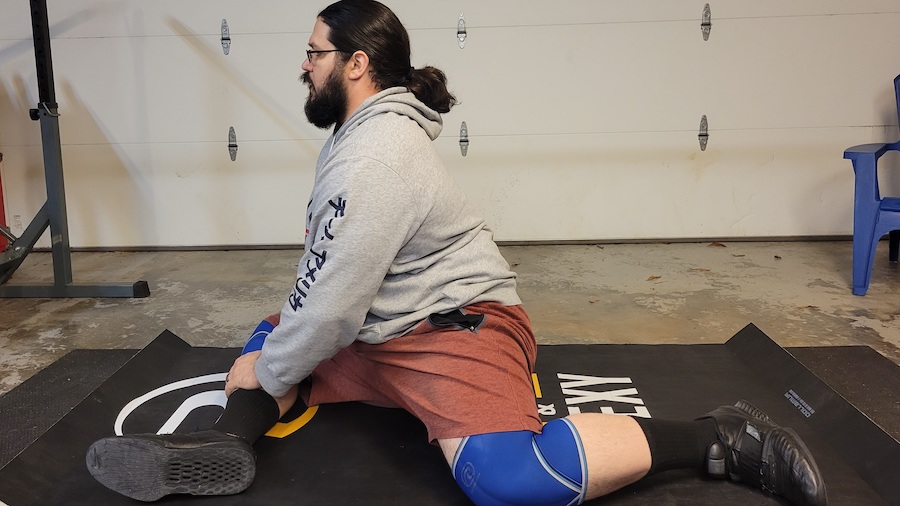
Is it normal to be sore after mobility training?
“It’s normal to be sore after doing anything that your body isn’t used to, even activities that are generally considered gentle, like mobility work,” says Nicole Davis, CPT (certified personal trainer). “By pushing your joints through a range of motion they aren’t accustomed to (and stretching your muscles deeply in the process), yes, it’s possible to experience soreness afterward.”
What are the best mobility exercises?
The best mobility exercises for you depend on your weaknesses, needs, and goals. However, we’re big fans of the scorpion stretch, pigeon pose, cat-cow, and thoracic reaches in a squat position.
When to do mobility exercises?
You can do mobility training in isolation, or perform a few reps of mobility exercises before and/or after your workouts. Save the static stretching for post-workout sessions and prioritize dynamic movement specific to your workout beforehand.
What do mobility exercises help with?
Mobility training will help your joints and muscles move better, both in your upper body and lower body. Some people also experience relief from chronic symptoms like back pain after following a mobility plan consistently.


